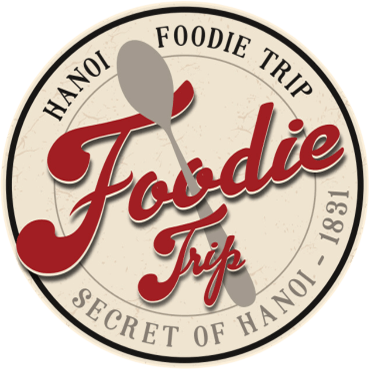Vietnamese cuisine is famous for its delicious street food, but for first-time visitors from abroad, some of the unusual dishes in Vietnam have been fascinating, astonishing, and quite intriguing. Examples such as tiet canh (fresh blood soup), pha lau (intestine stew), balut (fertilized duck embryo), coconut worms… are quite common in the eating habits of Vietnamese people and often found in daily markets and street food stalls. However, they can be quite shocking to foreign tourists when explained. How many dishes from this list have you tried?
Trung vit lon – (Fertilized duck egg)
This is one of the dishes that foreigners find relatively easier to accept and enjoy in Vietnam compared to the dishes mentioned above. Balut is an egg in which the embryo of a duck has partially developed. It is considered a very rich source of protein and is consumed by adults and even children in Vietnam for breakfast (in the North) or dinner (in the South). Balut is often eaten with Vietnamese coriander leaves and dipped in a mixture of salt and chili with lime.
Some foreigners might feel a bit apprehensive about balut, but there’s an alternative called quail balut, which features smaller eggs that are easier to eat. Stir-fried quail balut with tamarind is a dish often served in the afternoon and has a significant local following. Additionally, dishes made from insects like crickets are also available and enjoyed in the local cuisine.

Chan ga- Chicken feet
Chicken feet are very popular in Vietnam and can be found everywhere. They can be prepared in many ways, such as frying with chili and honey sauce, or boiling with traditional spices like ginger and lemongrass, or steaming with spring onions and dipping in salt and pepper. They are also often served as a side dish with hotpot, soup, or porridge.

Oc- (Sea snails dishes)
When talking about snails in Vietnam, people are probably referring to sea snails. Especially in the North, in the area of Halong Bay, snail dishes are very popular.

Most snail dishes are primarily sold in the evening. To properly enjoy snails, you first choose the type of snail, then how it’s cooked, and finally, you select your preferred sauce or seasoning. Common ingredients include lemongrass and ginger, tamarind sauce, and spring onions.
Red jellyfish salad eaten with shrimp paste dip
This is a dish that you can only find in a few places on the streets of Hanoi in the morning and is not very common. All the flavors of the dish come from herbs (spearmint and purple perilla) and most importantly, “shrimp paste.” Shrimp paste itself is a rather unique dipping sauce: it’s very rich, salty, and has an unforgettable aroma.
This dish is also served with grilled tofu and finely shredded young coconut. Shrimp paste is also used extensively in other Vietnamese dishes such as “bun rieu” and “bun dau.”
Thang co
Thang Co is a traditional dish of the H’mong people, originating from Yunnan, China. It is typically made using horse meat and its internal organs prepared in a traditional way. Later on, the dish incorporated other types of meat such as beef, buffalo, and pork. According to Giang Seo Sau, a renowned Mong ethnic person known for preparing delicious horse thang co, the dish has been around for nearly 200 years when Hmong, Tay, and Nung people settled in Bac Ha.
In China, there is also a dish called “banh canh ha cao nhan thang co.” Unlike traditional thang co, this dish includes ngu vi huong (a type of spice) in the filling. When served, it is accompanied by fermented tofu and pickled radish.

Silkworms, river worms and other worm dishes
Grilled silkworm nymphs (con nhong) or roasted silkworms is a popular street food in Vietnam, but it might seem quite exotic to foreigners. Many consider this to be one of the unusual foods in Vietnam, yet it’s also quite delicious. It’s highly regarded for its protein content and minerals. In rural areas of the northern region, silk worms are raised primarily for their silk production. You can easily find roasted silkworms as a common dish served in local eateries and rice stalls.
Especially in the Mekong Delta region, coconut worms are also a highly favored dish. These are larvae that thrive within the trunks of coconut trees. Unlike roasted silkworms, coconut worms are consumed alive and are typically dipped in fish sauce before eating. They are typically eaten by biting off their heads first.
Another type of insect used in distinctive Vietnamese dishes is the sandworm. It’s mixed with eggs and pork, then pan-fried. This dish is called ‘chả rươi.’ Sandworms are considered nutritious and beneficial for conditions like joint inflammation or muscle pain. These insects are quite easy to find at local markets, especially in the fresh seafood sections in northern Vietnam.

Tiet Canh- (Blood soup and animal organ soup)
Tiet Canh is a mixed dish that uses fresh blood and internal organs from various animals. Pork, beef, duck, or chicken can all be used to prepare this dish. At night, on the streetside eateries, it’s not uncommon to see a wide variety of internal organs available for you to choose from and add to your Tiet Canh. You can select duck liver, pig brains, heart, or beef stomach to enhance the diversity of the dish’s filling.
Pha Lau- Vietnamese stewed offal
Pha Lau is a popular Vietnamese dish in Ho Chi Minh City, made from beef meat and organs marinated in a mixture of spices, often including five-spice powder or sometimes curry powder. This dish is typically served with black pepper, lime or calamansi, and a dipping sauce made from fish sauce and chili. It can be enjoyed with rice, noodles, or bread. Pha Lau can also be found in Cambodia, Myanmar, and other Southeast Asian countries.
Regarding the dish pha lau, many sources suggest that it originated from the ethnic minority communities in China. An authentic phá lấu dish includes spices such as five-spice powder, cinnamon, star anise, cloves, and other medicinal herbs, while the meat (pork or beef) or any organ can be used to prepare it, including the tongue, ears, heart, and more.
Ga Tan Den – (Black chicken in herbal soup)
This soup is very popular in Vietnamese cuisine and is highly regarded for its health-supporting properties. The broth is prepared using Chinese herbs (traditional Chinese medicine) and dried fruits, including mugwort and dried persimmon.
The soup dish can be prepared with regular chicken, but it is most nutritious when cooked with black chicken, a special breed of chicken in Vietnam that is relatively small, about 1/2 to 1/3 the size of regular chickens. This dish is used to nourish women, children, and those recovering from illness.
Ruou ran – Snake wine
Snake wine, known as “ruou ran” in Vietnamese, is a unique traditional beverage rooted in Southeast Asia, particularly Vietnam. This distinctive drink involves infusing a venomous snake, usually a cobra or viper, into a bottle of rice wine or grain alcohol. As it ferments for months or even years, the snake’s venom and essence blend with the alcohol, creating a distinctive flavor and, according to some, medicinal properties.
Snake wine is cherished not just for its flavor but also for its perceived health benefits. In Vietnamese culture, it’s viewed as an aphrodisiac, believed to enhance vitality and cure various ailments. While it’s not to everyone’s taste, sampling snake wine can offer adventurous travelers an authentic and memorable experience during their visit to Vietnam.







